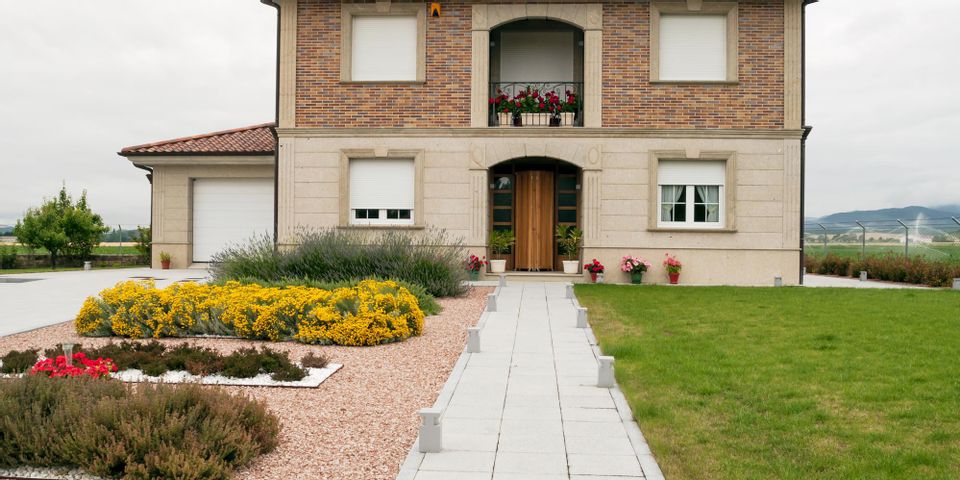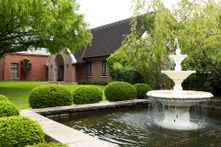Top 4 Tips for Protecting Your Hardscaping This Winter

Winter months can bring chilly temperatures and heavy precipitation. If you have hardscaping elements in your landscaping layout—such as concrete paths or fountains—the winter weather can damage them unless appropriate care is taken. Below are four key steps to ensure your lawn care routine prepares your hardscape for the cold season.
How to Preserve Hardscaping Until Spring
1. Don’t Use Corrosive Deicers on Concrete
Concrete can make for stunning pathways and patios, but it becomes slippery during the winter in icy conditions. Before you reach for your standard deicing method, though, make sure to read the label. Deicing salts are corrosive to concrete, and fast-acting calcium chloride—which is found in many popular deicing solutions—can be equally bad for it. Instead of opting for harsh chemicals, find a deicer with potassium chloride as the main component. You can also use plain sand—or, in a pinch, kitty litter—to provide traction in slippery conditions.
2. Avoid Metal Scrapers
When ice and snow make their way to the South during winter, people break out snow shovels and ice scrapers to remedy the situation. Make sure the tools you’re using on your concrete aren’t metal. Metal shovels and scraping devices can scratch, chip, or otherwise damage concrete surfaces, causing lasting blemishes on its smooth appearance. Hard plastic or wooden scrapers are efficient, affordable, and safe for use on concrete.
3. Clean & Disconnect Water Features
 Be sure to disconnect and thoroughly clean your hardscaping water features before the temperatures drop. Deposits of minerals and grime can collect in the mechanisms and water lines, blocking flow and collecting additional debris as winter’s wind and precipitation runoff can introduce new contaminants to the water. Once cleaned, safely store all water features in a warm, dry place for winter. You can package them so that debris and insects can’t reach them, making spring setup a breeze. For permanent fixtures, turn off the water supply during winter, if possible.
Be sure to disconnect and thoroughly clean your hardscaping water features before the temperatures drop. Deposits of minerals and grime can collect in the mechanisms and water lines, blocking flow and collecting additional debris as winter’s wind and precipitation runoff can introduce new contaminants to the water. Once cleaned, safely store all water features in a warm, dry place for winter. You can package them so that debris and insects can’t reach them, making spring setup a breeze. For permanent fixtures, turn off the water supply during winter, if possible.
4. Prepare Concrete Surfaces
Before the cold arrives, fill any existing cracks or holes in concrete. Otherwise, precipitation that collects in them can freeze and expand, worsening the damage. This then allows more precipitation to gather in the future, freeze, and again expand the damages. Concrete patching kits are available at most hardware and lawn care stores, and they’re simple to use. You should also have your entire concrete surface sealed to reduce gradual erosion caused by weather.
For professional hardscaping, landscaping, and lawn care services completed with a smile, contact Landscape Carolina. Backed by 30 years of experience, this locally owned and operated company specializes in helping homeowners of Lancaster County, SC, get the most out of their lawns. Their comprehensive services include design, irrigation, fertilization, tree and shrub removal, lawn pest control, and more. Passionate about their clients and uncompromising on their standards, they’ll deliver exceptional service that leaves your lawn flawless. Learn about their hardscape services online, then call (803) 289-7888 to speak with an expert.
About the Business
Have a question? Ask the experts!
Send your question

